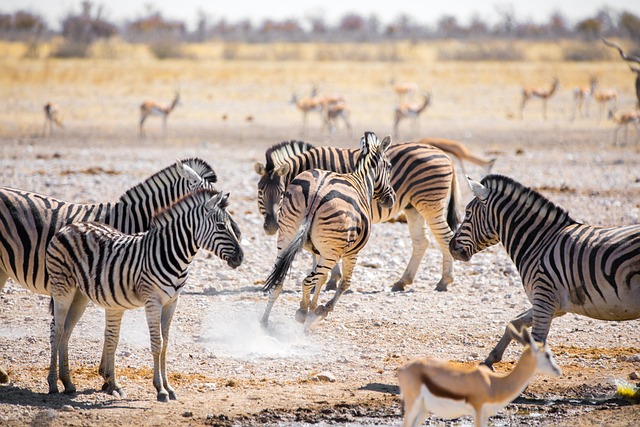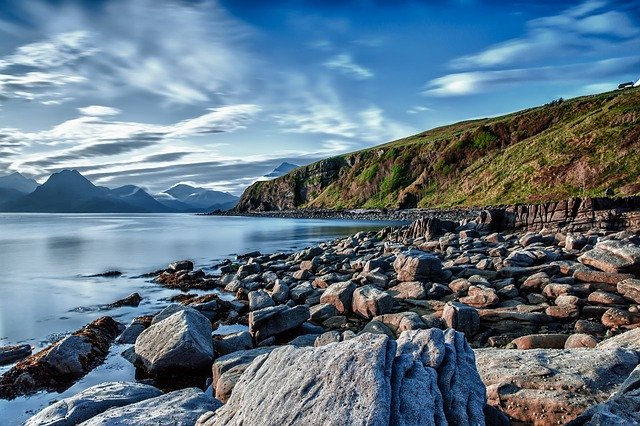For nature lovers and adventure seekers, a Tanzania safari offers an unparalleled opportunity to witness the wild heart of Africa in all its glory. With sweeping savannahs, towering volcanic craters, and lush national parks, this East African gem is a sanctuary for incredible wildlife and breathtaking landscapes. Travelers here are immersed in a world where elephants roam freely, lions rule the plains, and vibrant birdlife fills the skies, creating unforgettable moments at every turn.
Unlike many tourist destinations, Tanzania’s approach to conservation has preserved its ecosystems with remarkable care. National parks and game reserves cover nearly 40% of the country, providing visitors with a front-row seat to some of the most captivating natural spectacles on the planet.

The Serengeti: A Stage for the Great Migration
Few wildlife experiences rival the drama of the Serengeti. This UNESCO World Heritage Site is synonymous with the Great Migration, an annual journey where over 1.5 million wildebeest, along with zebras and gazelles, traverse the plains in search of fresh grazing. The spectacle is both awe-inspiring and deeply humbling, as predators like lions, cheetahs, and hyenas closely follow the herds, turning the grasslands into a dynamic stage of survival.
Beyond the migration, the Serengeti offers a year-round abundance of wildlife. Leopards lounge in acacia trees, giraffes stride gracefully across open plains, and elephants move silently through the savannah. Early morning game drives reward travelers with golden sunrises and sightings of elusive nocturnal animals heading back to cover.
Ngorongoro Crater: A Natural Amphitheater of Life
The Ngorongoro Crater is often described as a natural wonder, and for good reason. Formed from a collapsed volcano millions of years ago, this vast caldera creates a unique habitat where wildlife thrives. Within its 100-square-mile floor, visitors can spot a staggering density of animals, including black rhinos, hippos, and a high concentration of predators.
The crater’s natural enclosure makes it a remarkable location for observing the “Big Five”—lion, leopard, elephant, buffalo, and rhinoceros—in a single day. Its scenery is as striking as its wildlife: misty crater walls rise dramatically around the plains, creating an unforgettable backdrop for photography and exploration.
Tarangire National Park: A Haven for Elephants
While the Serengeti and Ngorongoro often steal the spotlight, Tarangire National Park offers a more tranquil safari experience. Famous for its towering baobab trees and sweeping landscapes, Tarangire is particularly known for its large elephant herds. During the dry season, thousands of these gentle giants gather near the Tarangire River, creating one of the most spectacular elephant-viewing opportunities in Africa.
The park also hosts a variety of other wildlife, from wildebeest and giraffes to over 500 bird species. Its relatively quieter trails make it ideal for those seeking a more intimate connection with nature, away from the busier circuits.
Selous Game Reserve and Ruaha: Tanzania’s Wild Heart
For travelers seeking remote and untouched wilderness, the southern parks of Tanzania offer a completely different experience. Selous Game Reserve (now part of Nyerere National Park) and Ruaha National Park provide vast, uncrowded landscapes teeming with wildlife.
Ruaha, in particular, is known for its rugged terrain, dramatic escarpments, and one of the highest concentrations of lions in Africa. Selous, on the other hand, offers a unique combination of game drives and boat safaris, allowing visitors to watch hippos, crocodiles, and birds along the Rufiji River. These parks appeal to adventurers who want to explore beyond the classic safari routes.
The Big Cats: Tanzania’s Apex Predators
Tanzania’s reputation as a predator stronghold is well deserved. Lions, often spotted resting under the shade of acacias or perched atop kopjes (rocky outcrops), are the stars of the show. The Serengeti is home to some of Africa’s largest lion populations, making sightings almost guaranteed.
Cheetahs, built for speed, thrive in the open grasslands, where they chase down gazelles in exhilarating pursuits. Meanwhile, leopards are masters of stealth, best observed at dawn or dusk as they descend from trees to hunt. Together, these big cats embody the raw beauty and balance of Tanzania’s ecosystems, where every creature plays a vital role in the circle of life.
Birdwatching Paradise
While big mammals often dominate safari conversations, Tanzania is a treasure trove for bird enthusiasts. Over 1,100 species have been recorded, including the striking lilac-breasted roller, the African fish eagle, and flocks of flamingos that turn Lake Manyara into a sea of pink.
Wetlands, savannahs, and forested areas provide a rich diversity of habitats, attracting migratory species from as far as Europe and Asia. Birdwatching is particularly rewarding in parks like Lake Manyara, Tarangire, and the Selous Game Reserve, where a mix of aquatic and woodland birds thrive.
Cultural Encounters: Beyond the Wildlife
A journey through Tanzania is as much about people as it is about animals. The Maasai, one of Africa’s most iconic ethnic groups, offer a glimpse into a way of life deeply connected to the land. Visiting a Maasai village or engaging with local guides provides cultural context and enriches the safari experience.
Other ethnic groups, such as the Hadzabe hunter-gatherers near Lake Eyasi, also open windows into Tanzania’s human history. These encounters remind visitors that conservation efforts not only protect animals but also sustain the traditions of communities who have lived alongside wildlife for centuries.
Practical Tips for an Unforgettable Safari
Planning a safari in Tanzania requires thoughtful preparation to make the most of your journey. Here are a few essentials:
- Timing Matters:
The best time to witness the Great Migration in the Serengeti is between June and October, while January and February are ideal for calving season, when predators are particularly active. - Park Variety:
Combine famous destinations like Serengeti and Ngorongoro with lesser-known parks such as Tarangire or Ruaha for a richer experience. - Responsible Travel:
Choose lodges and tour operators that prioritize sustainable practices, as eco-tourism plays a crucial role in funding conservation initiatives. - Health and Safety:
Consult a travel clinic for vaccinations and malaria prevention. Also, carry lightweight, breathable clothing, and don’t forget your binoculars and camera gear. - Local Expertise:
Hiring local guides enhances your journey. Their deep understanding of wildlife behavior and park terrain adds depth to every game drive.
Why Tanzania Stands Out
Tanzania offers more than just wildlife encounters—it offers a profound sense of connection to the natural world. Its diverse landscapes, from the endless plains of the Serengeti to the volcanic wonders of Ngorongoro, create a sanctuary for some of the planet’s most fascinating creatures. Whether you’re embarking on your first Tanzania safari or returning for another adventure, the country’s raw beauty and commitment to conservation ensure that every visit feels both thrilling and meaningful.
From the roar of a lion at dawn to the graceful glide of a fish eagle over a river, Tanzania’s wilderness is a symphony of life waiting to be explored. If you want to explore some unique wonders of Africa then don’t forget to check our other travel guides.


